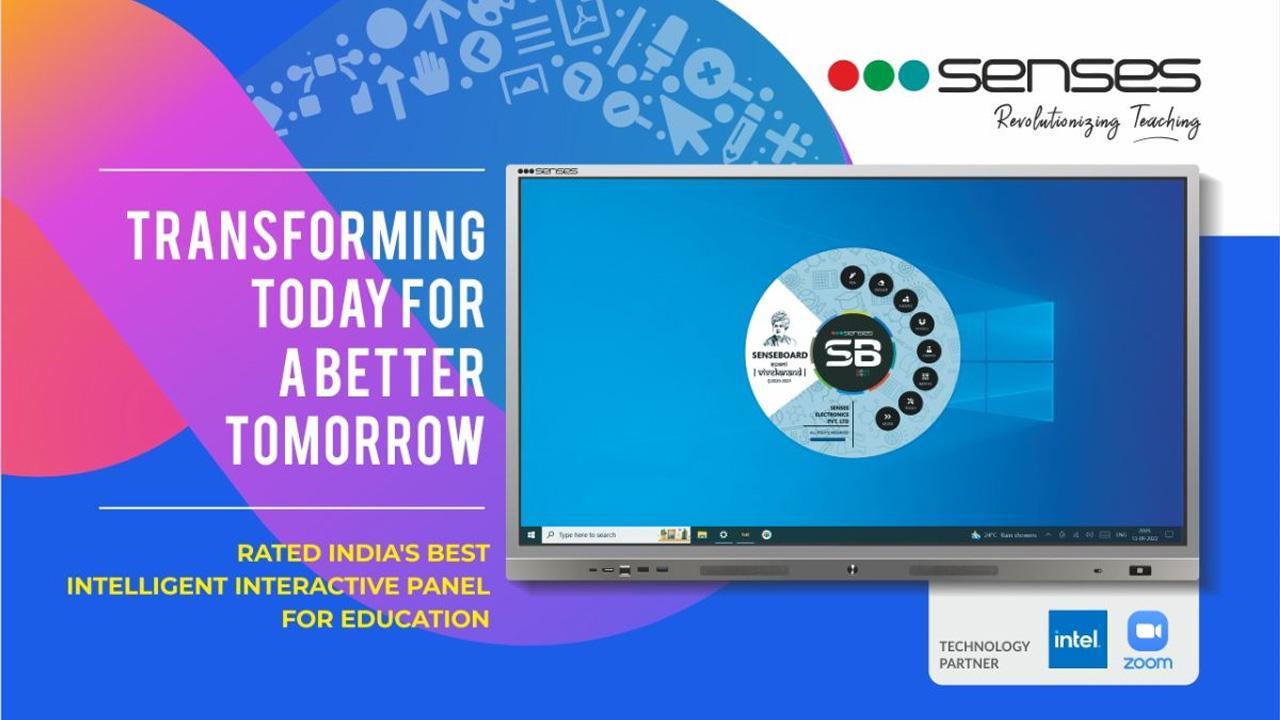That would be a clear signifier that classrooms as we know them are ready to evolve. And with Senses Interactive Panels, that is exactly what we can expect to happen.

Do you remember as children when your teacher would ask you to come up to the whiteboard and write an answer to a question he has asked, solve a complex equation, or fill in the blanks? It was a moment that made all of us nervous, and any student would react the same way in a similar situation.
ADVERTISEMENT
But imagine if the students had nothing to be nervous about? Imagine if they could use that same whiteboard to find the answer. Imagine if the whiteboard was much more than a writing space: imagine if it was an interactive panel connected to the world wide web, which would provide any student with the answer they were looking for and even solve the most complex equations for them at a moment’s notice.
That would be a clear signifier that classrooms as we know them are ready to evolve. And with Senses Interactive Panels, that is exactly what we can expect to happen.
WHY DO CLASSROOMS NEED TO EVOLVE?
Classrooms need to evolve to keep up with the changing needs and expectations of students and take advantage of new technologies and teaching methods that can enhance the learning experience. As society and the economy change, the skills and knowledge students need to succeed also change. Therefore, it is important for classrooms to adapt and provide students with the tools and resources they need to learn and thrive in the modern world.
Additionally, classrooms need to evolve better to meet students' diverse needs and learning styles. This can involve incorporating various teaching methods, such as project-based, problem-based, and blended learning, to engage and challenge all students.
Finally, classrooms need to evolve to keep pace with advances in technology and education. The use of technology, such as online learning platforms, virtual reality, and artificial intelligence, can provide new and exciting ways for students to learn and interact with course materials. By evolving to incorporate these new technologies, classrooms can provide a more engaging and effective learning experience for students.
HOW CAN INTERACTIVE PANELS HELP CLASSROOMS?
Interactive panels, also known as interactive whiteboards or displays, are electronic devices used in classrooms to enhance the learning experience. These panels typically consist of a large display screen that can be controlled by a computer or other device, and they can be used in various ways to support teaching and learning.
One way interactive panels can help classrooms is by providing a visually engaging way to present and explain information. For example, teachers can use interactive panels to display videos, images, and other multimedia content and annotate and highlight key points. This can help to make lessons more interactive and engaging for students.
Interactive panels can also be used to facilitate collaborative learning. Many interactive panels have built-in tools such as pens, touch screens, and document cameras, which can be used by students to work on projects, share ideas, and collaborate with their peers. This can help to foster a more interactive and participatory learning environment.
Finally, interactive panels can support personalized learning by providing students access to various digital resources and tools. For example, teachers can use interactive panels to provide students with customized learning paths and activities or to allow students to access online resources and complete assignments at their own pace. This can help meet students' diverse needs and learning styles and make learning more flexible and adaptable to their individual needs.
HOW ARE SENSES EVOLVING IN THE CLASSROOMS?
1. The interactive panels from Sensesmake learning more interactive and enjoyable for students. For example, using hands-on activities, sensory materials, and multimedia resources can help engage students' senses of touch, sight, and sound, making lessons more engaging and memorable.
2. They can also help students understand and remember new concepts and information better. For example, using visual aids, demonstrations, and hands-on activities can help students to see, hear, and experience new concepts in a concrete way, which can make them easier to understand and retain.
3. They can also help to make learning more inclusive and accessible for all students. For example, providing visual aids, audio resources, and hands-on materials can help meet students' diverse needs and learning styles. They can make learning more accessible to those with different abilities or learning challenges.
4. Finally, these interactive panels can help to create a more positive and stimulating learning environment. For example, using colourful materials, music, and other sensory resources can help create a more pleasant and engaging atmosphere, which can benefit students and teachers.
 Subscribe today by clicking the link and stay updated with the latest news!" Click here!
Subscribe today by clicking the link and stay updated with the latest news!" Click here!







